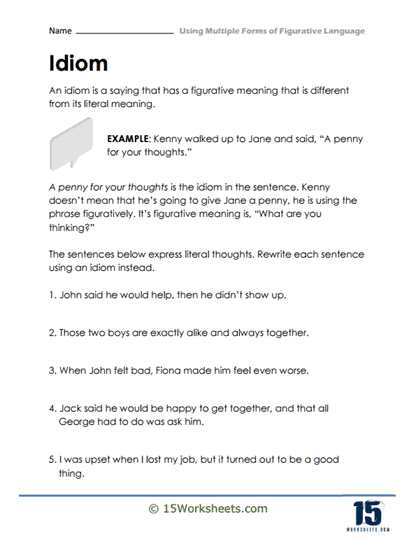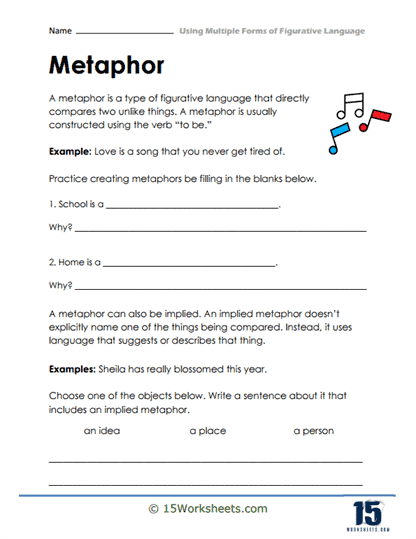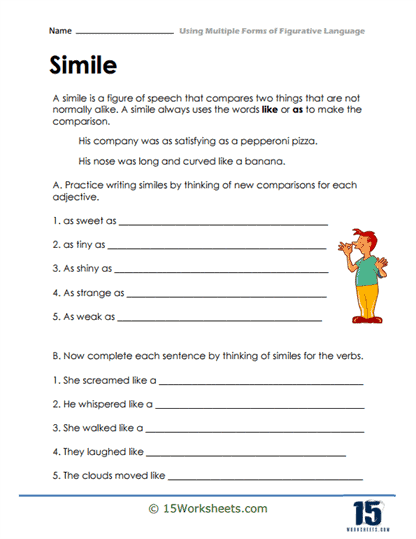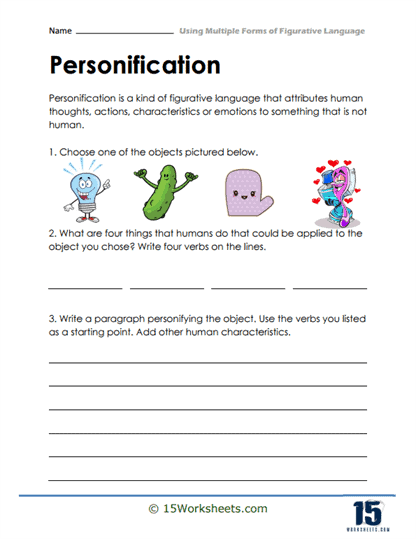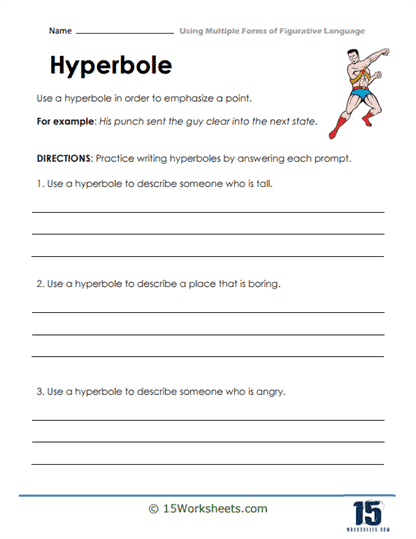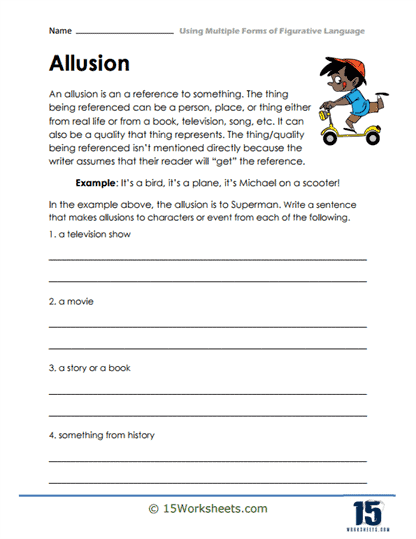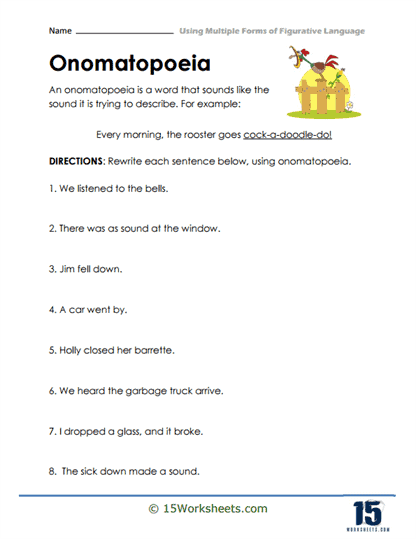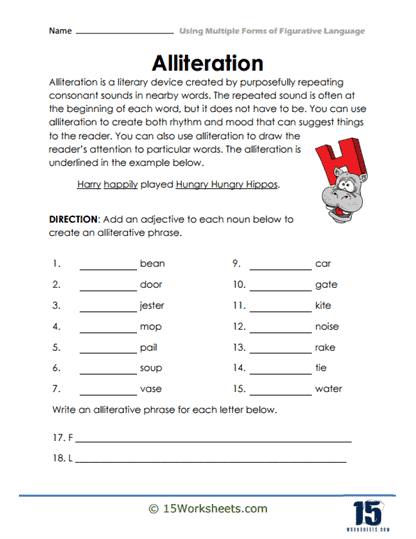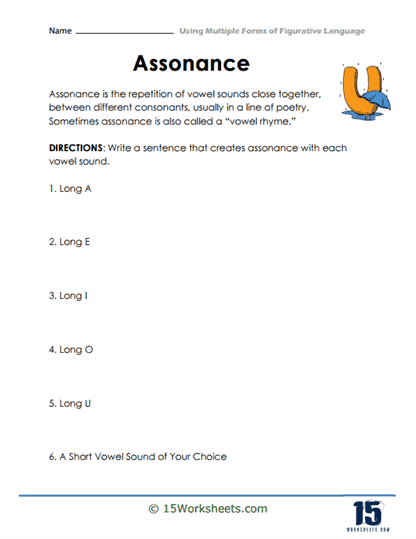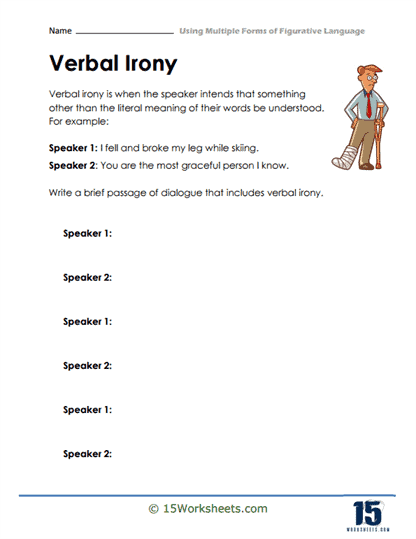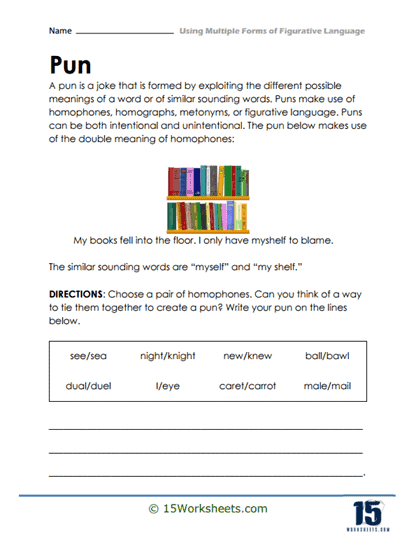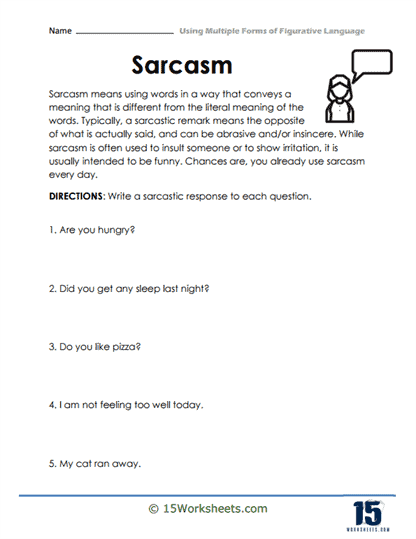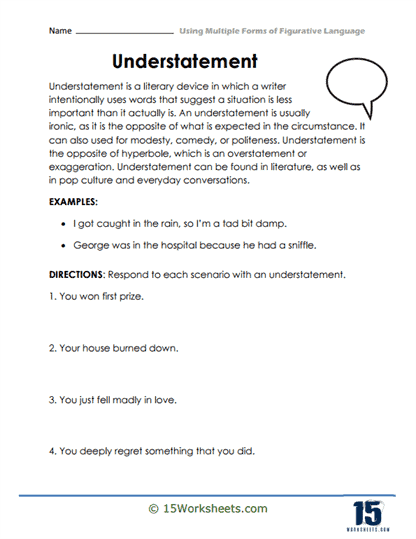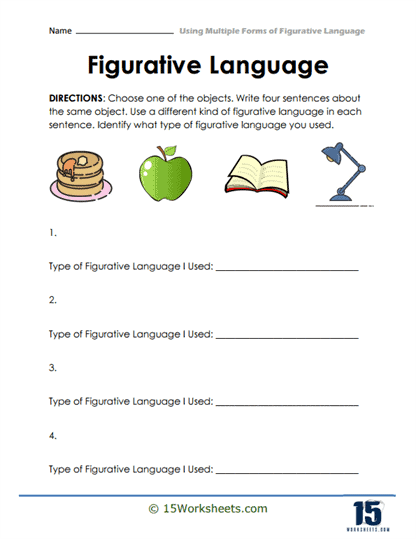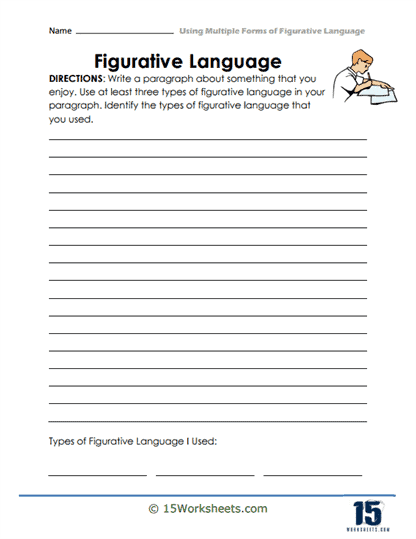Using Multiple Forms of Figurative Language Worksheets
All About These 15 Worksheets
This series of 15 worksheets offers an exciting and comprehensive resource designed to help students understand and effectively use multiple forms of figurative language in their writing. These meticulously crafted worksheets provide a platform for them to explore the richness and impact of figurative language, enhancing their creativity, descriptive skills, and overall writing proficiency.
The worksheets empower students to experiment with various literary devices such as similes, metaphors, idioms, personification, hyperbole, alliteration, onomatopoeia, and more. Through a series of engaging exercises, they will learn to incorporate these forms of figurative language to add depth, vividness, and emotional impact to their writing. By completing these worksheets, students will:
- Understand how figurative language goes beyond literal meanings, engaging readers and evoking powerful imagery and emotions;
- Engage in activities that help them grasp the unique qualities and nuances of each literary device;
- And learn new words and expressions, enhancing their descriptive abilities and enriching their writing with a broader vocabulary repertoire.
In summary, this series offers an engaging and transformative learning experience. By incorporating various forms of figurative language, students enhance their descriptive skills, creativity, and emotional expression in writing. They develop a deep appreciation for the power of language and its ability to captivate readers and convey meaning beyond the literal.
Whether used in language arts classrooms, creative writing workshops, or as part of individual study, these Using Multiple Forms of Figurative Language worksheets provide a valuable resource for students to explore and master the art of using figurative language.
How to Use Multiple Forms of Figurative Language
Figurative language is a powerful tool that writers and speakers use to create vivid imagery, convey abstract ideas, and add depth to their work. Using multiple forms of figurative language can enhance the richness and impact of your writing. Here are some popular types of figurative language and tips on how to use them effectively:
Simile – A simile compares two unlike things using “like” or “as.” It helps the reader visualize a concept or create a connection between two ideas.
Example: Her smile was as warm as sunshine.
Tip – Use similes to make descriptions more vivid and relatable, but avoid cliches or overused comparisons.
Metaphor – A metaphor compares two unlike things by saying one is the other. It creates a strong, direct association between two concepts.
Example: Time is a thief.
Tip – Use metaphors to create powerful imagery, but be mindful not to mix or overuse them in a single piece, which can lead to confusion.
Personification – Personification gives human qualities to non-human things, such as objects, animals, or ideas.
Example: The wind whispered through the trees.
Tip – Use personification to create vivid imagery and evoke emotions in your reader, but avoid overusing it, as it can seem forced or detract from the central message.
Hyperbole – Hyperbole is an exaggerated statement used for emphasis or to create a dramatic effect.
Example: I’m so hungry I could eat a horse.
Tip – Use hyperbole sparingly to emphasize a point or add humor, but avoid overuse, which can make your writing seem less credible.
Allusion – An allusion is a reference to a well-known person, place, event, or work of art that helps convey a deeper meaning or context.
Example: He had a Herculean appetite.
Tip – Use allusions to enrich your writing and connect with your audience, but make sure the references are familiar to your target readers, or the intended effect may be lost.
Idiom – An idiom is a common expression whose meaning is not literal, but rather figurative or symbolic.
Example: It’s raining cats and dogs.
Tip – Use idioms to create a conversational tone or to convey a familiar idea, but be mindful of cultural differences, as some idioms may not be universally understood.
Onomatopoeia – Onomatopoeia is the use of words that imitate the sounds they describe.
Example: The bees buzzed around the flowers.
Tip – Use onomatopoeia to create a vivid sensory experience and bring your writing to life, but don’t rely on it too heavily, as it can become repetitive.
When using multiple forms of figurative language, balance is key. Be sure to choose the most appropriate type for the context and purpose of your writing, and avoid overloading your text with too many figurative expressions, which can be distracting or confusing. By using figurative language effectively, you can create memorable, engaging, and thought-provoking writing that resonates with your readers.

